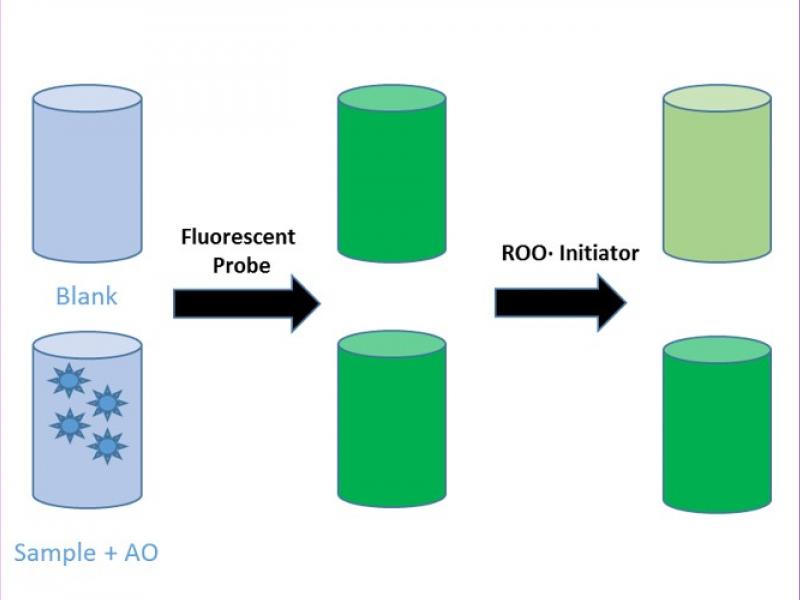New
ORAC antioxydant capacity
Reference : KF01004
ORAC Assay – oxygen radical antioxidant capacity
Countries eligible for delivery
Countries eligible for delivery:
France (except Corsica and overseas departments and territories), Belgium, French overseas departments and territories, French Polynesia, Luxembourg, Switzerland, France (Corsica)
Antioxidant capacity is an overall ability of organisms or food to catch free radicals and prevent their harmful effect. Antioxidative effect includes protection of cells and cellular structures against harmful effect of free radicals, especially oxygen and nitrogen. Antioxidants are substances with antioxidative properties. Antioxidants are most commonly present in fruits and vegetables. In addition, other foods such as wine, meat or eggs contain these substances.
The ORAC assay depends on the free radical damage to a fluorescent probe, such as fluorescein, to result in a change of fluorescent intensity and the degree of change is indicative of the amount of radical damage. The presence of antioxidants results in an inhibition in the free radical damage to the fluorescent compound. This inhibition is observed as a preservation of the fluorescent signal.
It is possible to quantify the protection by calculating the area under the curve (AUC) from the experimental sample. After subtracting the AUC for the blank, the resultant difference would be the protection that the antioxidant compound confers. Trolox® (6-hydroxy-2,5,7,8-tetrametmethylchroman-2-carboxylic acid), a water-soluble vitamin E analog, is used as the calibration standard and ORAC results are expressed as Trolox® equivalents.
Because of the complexity of calculations, we attache an excell file with the needed equations and blank fields to fill in. The AUC calculation combines both the inhibition time as well as the inhibition percentage of free radical damage by the antioxidant into a single value.
The ORAC assay depends on the free radical damage to a fluorescent probe, such as fluorescein, to result in a change of fluorescent intensity and the degree of change is indicative of the amount of radical damage. The presence of antioxidants results in an inhibition in the free radical damage to the fluorescent compound. This inhibition is observed as a preservation of the fluorescent signal.
It is possible to quantify the protection by calculating the area under the curve (AUC) from the experimental sample. After subtracting the AUC for the blank, the resultant difference would be the protection that the antioxidant compound confers. Trolox® (6-hydroxy-2,5,7,8-tetrametmethylchroman-2-carboxylic acid), a water-soluble vitamin E analog, is used as the calibration standard and ORAC results are expressed as Trolox® equivalents.
Because of the complexity of calculations, we attache an excell file with the needed equations and blank fields to fill in. The AUC calculation combines both the inhibition time as well as the inhibition percentage of free radical damage by the antioxidant into a single value.
Biological samples, food samples and beverages.
Notice ORAC - kit de dosage.pdf
The attached documents are subject to change. To receive the latest updates, please contact us.
Specifications
| Reference | Packaging | |
|---|---|---|
| KF01004-100 | 100 tests (96 puits/wells format) | |
| KF01004-200 | 200 tests (96 puits/wells format) | |
| KF01004-400 | 400 tests (96 puits/wells format) |

